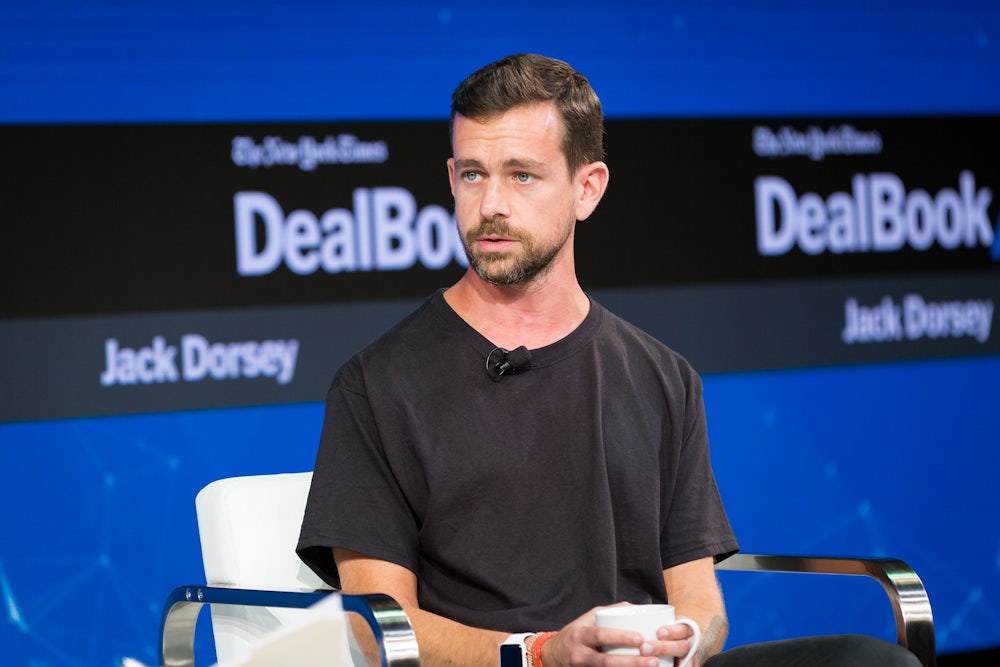Conservatives have spent years arguing that tech platforms are biased against them and suppressing their voices. On Wednesday, they appeared to get some damning proof. Vice News reported that Twitter was “shadow banning” prominent Republicans, meaning Twitter had effectively limited their visibility to the public. This is how Vice’s Alex Thompson described the situation:
The Republican Party chair Ronna McDaniel, several conservative Republican congressmen, and Donald Trump Jr.’s spokesman no longer appear in the auto-populated drop-down search box on Twitter, VICE News has learned. It’s a shift that diminishes their reach on the platform — and it’s the same one being deployed against prominent racists to limit their visibility. The profiles continue to appear when conducting a full search, but not in the more convenient and visible drop-down bar.
The uproar was immediate. “The notion that social media companies would suppress certain political points of view should concern every American,” McDaniel told Vice News in a statement. “Twitter owes the public answers to what’s really going on.” Republican Representative Matt Gaetz said he felt “victimized and violated.” The Drudge Report featured as many as three links to the story. And on Thursday morning, President Trump tweeted that it was “discriminatory and illegal.”
Twitter “SHADOW BANNING” prominent Republicans. Not good. We will look into this discriminatory and illegal practice at once! Many complaints.
— Donald J. Trump (@realDonaldTrump) July 26, 2018
The problem is that Twitter wasn’t “shadow banning” anyone. It was just a glitch—an error that occurred as Twitter attempted to roll out new features to make the service “healthier.” On Thursday Vice reported that Twitter had fixed the issue the previous night. It was a “side effect of Twitter’s recently stepped up attempts at improving ‘conversation health’ and limiting ‘troll-like behaviors.’”
But the damage was done. The Vice article, which followed a similarly dubious article by the same author claiming that Google had listed “Nazism” as the ideology of the Republican Party, fed the suspicion that conservatives are being persecuted by tech companies. Conservatives were more than happy to play along, since the whole debate is an exercise in bad faith designed to undermine Twitter’s ability to police its own platform.
Shortly after Vice published its attempted exposé, it became clear that its claims were overblown. Twitter officials, including CEO Jack Dorsey, tried to explain the glitch. It also started to dawn on people that McDaniel and Trump Jr.’s spokesperson aren’t exactly household names. (If you’re curious, the spokesperson is Andrew Surabian.) Some of the congressman affected, like Freedom Caucus head Mark Meadows and the scandal-embroiled Jim Jordan, have a better claim to prominence.
Furthermore, in Vice’s own story, NYU Law professor Ezra Waldman states the obvious: “This isn’t evidence of a pattern of anti-conservative bias, since some Republicans still appear and some don’t. This just appears to be a cluster of conservatives who have been affected. If anything, it appears that Twitter’s technology for minimizing accounts instead of banning them just isn’t very good.” That’s basically the story: Far from being an example of widespread censorship, shoddy technology limited the reach of people who aren’t particularly famous to begin with. The president’s tweets are still more than visible, as are those of the president’s eldest son. Is anyone really being oppressed if Surabian’s tweets are a little bit harder to find?
All of this has been ignored by the conservative media, which is acting as if this is the smoking gun they have spent months looking for. They are also seizing on the scandal to discourage Twitter’s roll-out of programs aimed at curbing abuse and the spread of fake news, making it clear that anything that smacks of “censorship” will be met with wall-to-wall conservative media coverage.
Twitter, like Facebook, has tried to steer clear of these controversies by insisting that it is an ideologically neutral platform committed to free speech. This is an impossible standard, given the reality that a lot of fake news and abuse comes from right-wing sources. Twitter can’t exactly say that without taking another PR hit from the right. So it instead accepts the premise of a bad faith argument and tries to move on.
However, Facebook’s efforts to deal with this exact problem have shown that this will be a serious long-term challenge for Twitter. For the last two years, Facebook has been dealing with accusations that its News Feed “curators” suppressed conservative news, all because the curators were populating the platform’s trending topics section with credible outlets like The New York Times instead of partisan shops like The Daily Caller. Still, the accusation stuck, so much so that it has become a serious obstacle in the company’s efforts to clean up its own platform. No matter how many times Twitter defuses these controversies, these complaints are not going to stop, because the whole point is to gum up efforts to make the site better.
